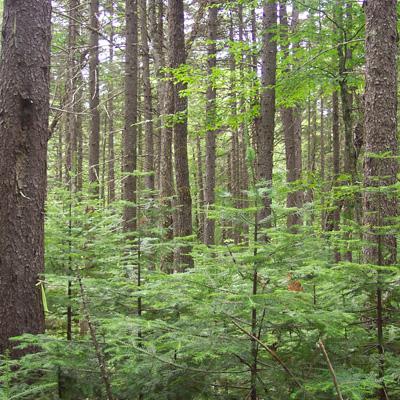Role of Unmanaged Reserves in Benchmarking and Refining Disturbance-based Ecological Forest Management

In the Northern Forest region, forest management must meet the goals of both timber production and ecosystem services, such as wildlife habitat and recreation. Ecological forestry seeks to support people and ecosystems through silviculture (harvesting and regeneration of trees) inspired by natural disturbance processes, while maintaining ecologically sustainable levels of timber production. Starting 20 years ago, resource managers in the Scientific Forest Management Area of Maine’s Baxter State Park have implemented the irregular shelterwood system, a silvicultural method that creates tree canopy gaps and forest structures resembling those in unharvested old-growth stands.
To understand the long-term effects of these ecologically based methods and associated harvesting on forest structure and processes, it is vital to evaluate these stands by comparing them to unmanaged stands and desired reference conditions. NSRC researchers compared treated stands with unmanaged second-growth benchmark stands and a nearby old-growth reserve to obtain baseline information for future comparisons between managed and old-growth forests.
Researchers found that compared to old-growth stands, secondary and treated forests had greater numbers of smaller trees, fewer dead snags, less volume of coarse woody material on the ground, and a larger proportion of canopy gaps. Average gap size in treated stands was much larger than that of the natural gaps in the secondary and old-growth forests, and much of the larger tree regeneration was damaged by harvesting operations. Comparing treated stands to two benchmark conditions helps to pinpoint exactly what aspects of forest management need to be adjusted. Old-growth reserves allow measurement of "natural" forest patterns and processes for comparison with those created by active management.
Download printable version [PDF]
Download full final report [PDF]
